How to Improve Your Reflexes and Reaction Time in Action Games
In this article, we’ll explore how to improve your reflexes and reaction time in action games. Whether you’re looking to gain an edge in competitive multiplayer games or just want to become faster and more efficient in single-player modes, these tips will help you level up your game.
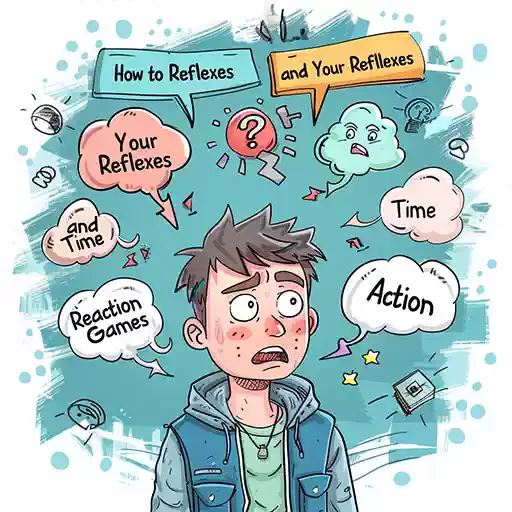
Understanding Reflexes in Gaming
What Are Reflexes and Reaction Time?
Before we dive into the tips and techniques, it’s important to understand the distinction between reflexes and reaction time. While the two terms are often used interchangeably, they refer to slightly different things.
- Reflexes: Reflexes are your body’s natural response to a stimulus, often happening automatically without conscious thought. Think of how you might flinch when something flies toward your face.
- Reaction Time: Reaction time refers to how quickly you can consciously respond to a stimulus, especially in situations that require decision-making. In gaming, this might be how fast you can pull the trigger when you see an enemy or dodge an incoming attack.
Both are crucial in action games, but reaction time often requires training, as it involves processing information and executing a response quickly.
Why Reaction Time Matters in Action Games
In the fast-paced world of action games, quick decision-making is essential. Whether it’s first-person shooters (FPS), fighting games, or battle royales, action games challenge you to respond rapidly to ever-changing scenarios. Reaction time becomes especially critical in competitive games, where every millisecond can mean the difference between winning or losing.
Improving your reaction time gives you the ability to anticipate enemy movements, respond to surprises more effectively, and execute complex combinations under pressure. In other words, the faster you can react, the better you perform.
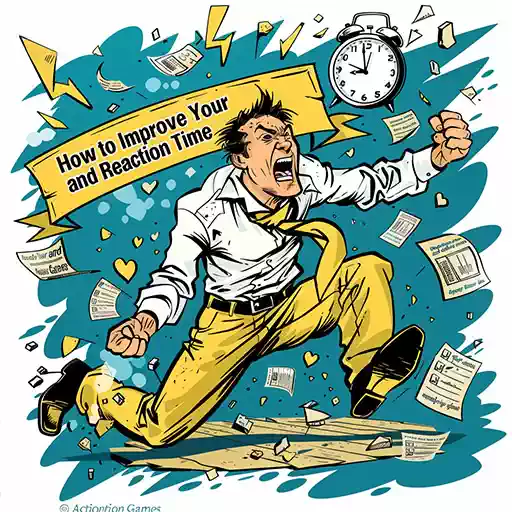
Techniques to Boost Your Reaction Time
Practice, Practice, Practice
It’s an age-old piece of advice, but it remains true for improving your reaction time: practice makes perfect. The more you play action games, the more you train your brain and body to react to in-game stimuli. Over time, your muscle memory and familiarity with the game’s mechanics will improve, allowing you to react faster.
Don’t be discouraged if you don’t see immediate results—improving reflexes takes time. Focus on specific game scenarios where reaction time is critical. Whether it’s navigating tight corners in a racing game or aiming quickly in a shooter, repetition is key to honing your reflexes.
Focus on Muscle Memory
Muscle memory is an often-overlooked aspect of improving reaction time in games. When you repeatedly perform the same actions—such as aiming, shooting, or jumping—your brain creates shortcuts that allow you to perform these actions faster over time. This means that when you encounter a familiar scenario, your body knows exactly what to do, without needing to process as much information.
To build muscle memory, focus on core game mechanics and repetitive movements. For example, practice aiming and shooting in FPS games, or executing combos in fighting games. Over time, these actions will become second nature, drastically improving your response time.
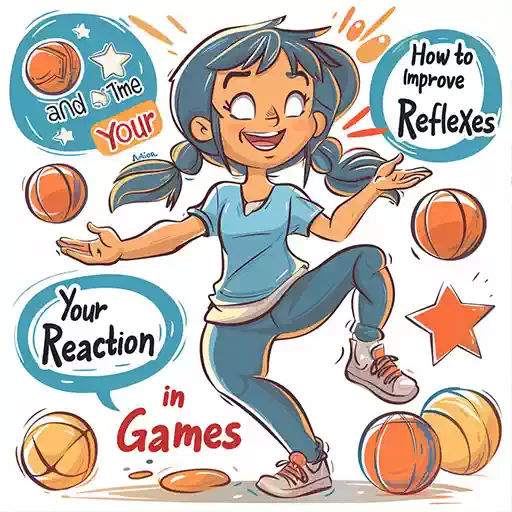
Optimizing Your Setup for Faster Reactions
Reduce Input Lag
One of the biggest obstacles to fast reaction times is input lag—the delay between pressing a button and the game registering your action. Input lag can be caused by several factors, including your hardware setup, display settings, and even network connection. Minimizing input lag is essential if you want to react as quickly as possible.
To reduce input lag:
- Use a gaming monitor: Gaming monitors typically have a lower response time and higher refresh rate, allowing for smoother and faster gameplay.
- Adjust your in-game settings: Lowering graphics settings can help reduce lag, especially on older PCs. A higher frame rate gives you more up-to-date visual information, which can lead to quicker reactions.
- Use a wired connection: If you’re playing online, a wired internet connection is generally faster and more stable than Wi-Fi, helping to reduce network latency.
Master Your Controls
Another crucial factor in improving reaction time is becoming intimately familiar with your game controls. Whether you’re using a controller or keyboard and mouse, knowing your setup inside and out can make all the difference when every second counts.
- Customize your controls: Many games allow you to remap buttons or keys. Set up your controls in a way that feels intuitive and allows you to perform important actions as quickly as possible.
- Use shorter key presses: For mouse and keyboard players, reducing the travel distance of your keys can improve reaction time. Mechanical keyboards with low actuation points are popular for this reason.
- Use a lightweight mouse: For faster aim and precision, consider using a lighter gaming mouse. This makes it easier to make rapid movements with minimal effort.
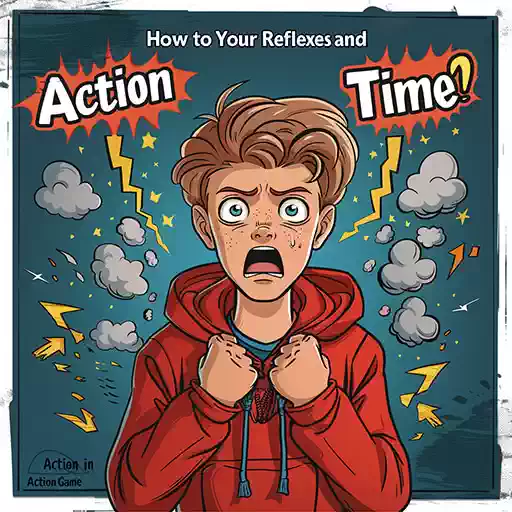
Mental and Physical Training for Faster Reflexes
Play Reaction Time Training Games
Believe it or not, there are games designed specifically to improve your reflexes and reaction time. Reaction training apps, like Aim Lab or Reaction Time Test, are great tools for sharpening your skills. These games simulate fast-paced scenarios that challenge your ability to react to visual and auditory stimuli.
The more you train your brain to recognize patterns and react to stimuli, the faster your reaction time will become in actual games. Think of these training apps as your personal gym for reflexes—they can condition your mind for faster responses, which then translates into quicker decision-making during gameplay.
Mindfulness and Focus
Another way to improve reaction time in gaming is by developing better mental focus. Reaction time is not just about how fast your hands move—it’s about how quickly your brain processes information and makes decisions. If your mind is distracted or scattered, your reaction time will suffer.
Consider incorporating techniques like mindfulness and meditation into your routine. Mindfulness helps you stay present in the moment, which can improve your focus during gameplay. When your mind is fully engaged, you’re more likely to notice small details and respond quickly to changing situations in the game.
Physical Conditioning and Reflex Training
While gaming may seem purely mental, your physical condition plays a big role in your reaction time. Hand-eye coordination, fine motor skills, and even overall physical health can impact how quickly you respond in-game.
Consider incorporating activities like sports, martial arts, or physical exercises that improve reflexes. Even something as simple as playing catch or practicing hand-eye coordination exercises can improve your in-game reflexes over time.
A well-rounded approach that combines both physical and mental training will give you an edge when it comes to lightning-fast reactions in action games.
Strategies for Staying Calm Under Pressure
Learning to Stay Calm in High-Stakes Situations
One of the biggest challenges in action games isn’t just how fast you can react, but how well you can keep your cool under pressure. When you’re in a high-intensity situation—like being the last player standing in a battle royale or facing a final boss—adrenaline can spike, and panic can slow down your reactions.
The key to overcoming this is to learn how to stay calm and composed. Try to focus on the task at hand instead of thinking about the stakes. Breathing exercises can also help you remain calm, allowing you to process information more clearly and react more efficiently.
Practice in High-Pressure Scenarios
The more you expose yourself to high-stakes situations, the better you’ll become at handling them. Practice makes perfect, even when it comes to pressure. Play ranked or competitive modes more frequently to get used to high-pressure situations. Over time, you’ll develop the mental resilience to perform well under stress, which will lead to faster reaction times when it matters most.
Conclusion: Reflexes Are a Skill, Not Just a Gift
Improving your reflexes and reaction time in action games is not just about talent—it’s about practice, setup optimization, mental focus, and training. By implementing these strategies, you can sharpen your reflexes and make quicker, more effective decisions in your favorite games.At FOGYX, we understand the importance of fast reflexes in action games. That’s why we build our games with intuitive controls and smooth mechanics that give players the chance to showcase their skills. Whether you’re competing online or just playing for fun, honing your reflexes will always give you a competitive edge. So keep practicing, stay focused, and watch as your reaction time improves—both in-game and in real life.
3 October 2024
More articles
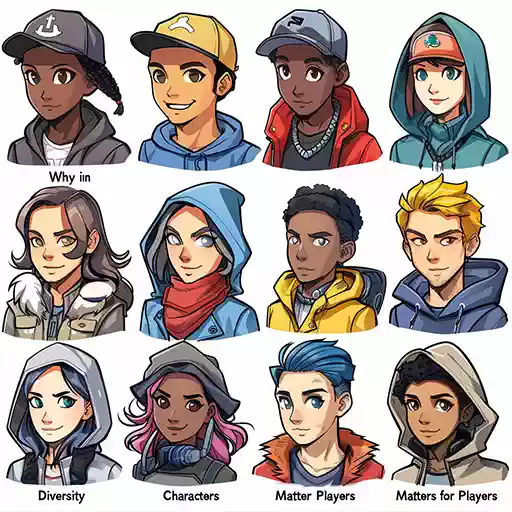
In recent years, the conversation surrounding diversity in gaming has grown louder, more prominent, and more urgent. As the gaming industry continues to expand its reach, the need for greater representation of different races, genders, sexual orientations, and cultural backgrounds in games has become undeniable. The call for diverse game characters isn’t just about inclusion for the sake of being politically correct—it’s about reflecting the real world and fostering deeper connections between players and the stories they engage with.
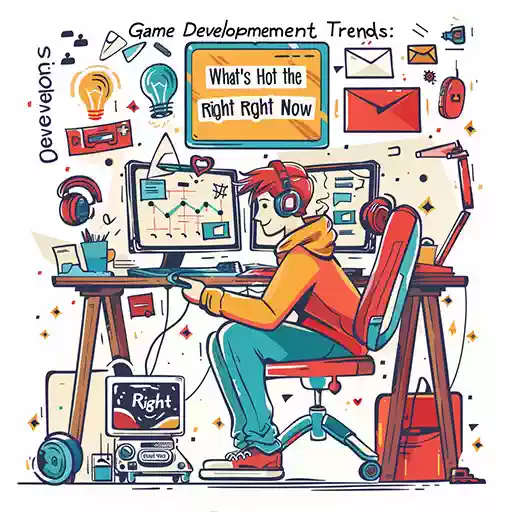
The gaming industry is one of the fastest-growing and most innovative sectors in entertainment. With new technologies emerging and player expectations evolving, the way games are developed is changing rapidly. Every year brings fresh trends that redefine how we think about gaming—whether it’s the rise of new genres, the push for inclusivity, or technological advancements. At FOGYX, we stay on top of these trends to ensure our games remain engaging, innovative, and, most importantly, fun.
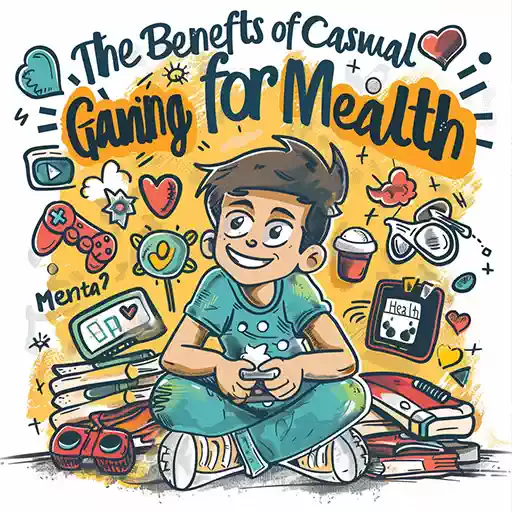
In today’s fast-paced world, finding ways to unwind, relax, and de-stress is more important than ever. People often turn to hobbies like reading, exercising, or watching TV to clear their minds, but there’s another powerful tool for mental relaxation that’s been gaining traction in recent years—casual gaming. Whether it’s a quick puzzle game during your lunch break or a relaxing farming simulator in the evening, casual gaming has proven to offer more than just entertainment.
all articles
